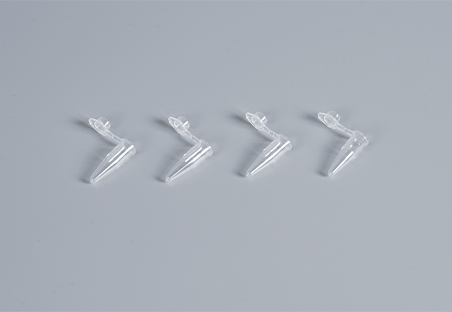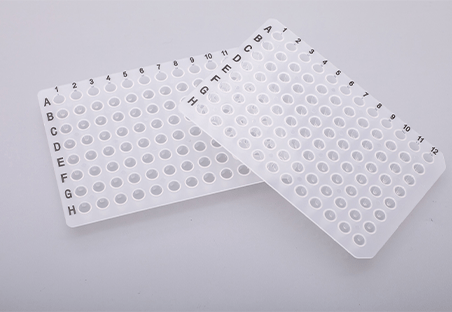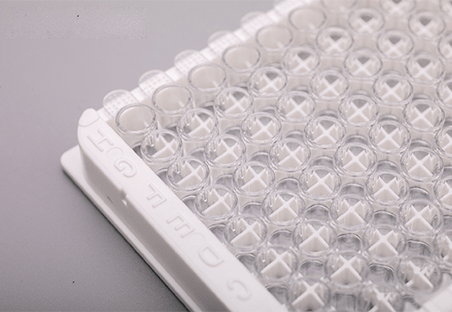Polymerase Chain Reaction (PCR) has emerged as a cornerstone of molecular biology research. This ingenious technique allows scientists to amplify small amounts of DNA, enabling a wide range of applications ranging from disease diagnosis to genetic engineering. Every successful PCR experiment requires a set of specialized tools known as PCR consumables. These seemingly simple plastic tubes and plates are critical to achieving accurate, efficient, and reproducible results. This article delves into the world of PCR consumables, covering the various types and their specific functions. We will discuss the importance of quality in PCR consumables and how it directly affects the success of your experiments. Finally, we will look at practical laboratory practices for promoting sustainability in PCR workflows while minimizing waste and environmental impact.
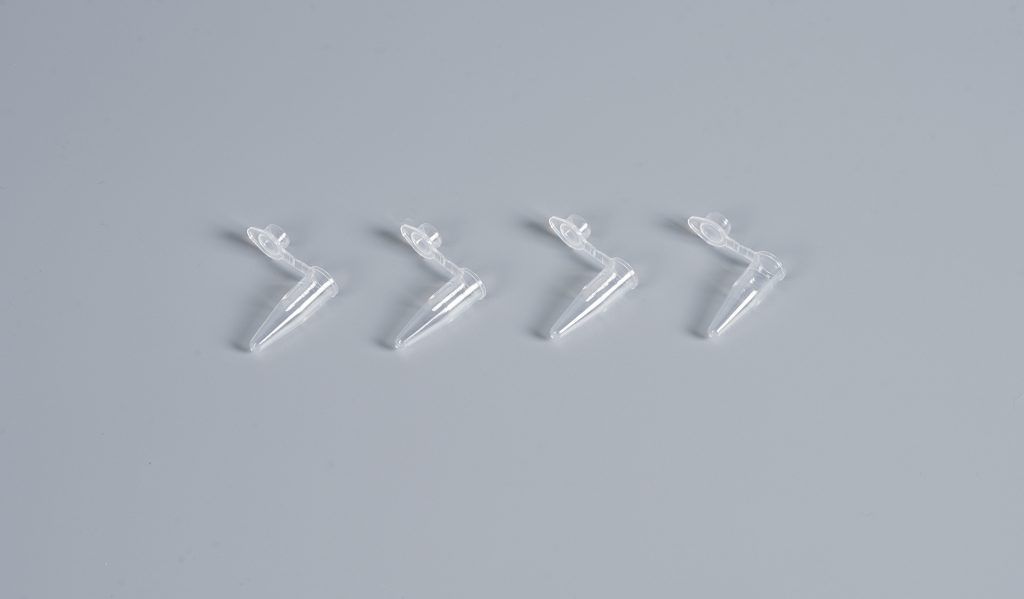
Types of PCR Consumables
PCR consumables are necessary for Polymerase Chain Reaction (PCR) experiments. They are typically made of plastic and are intended to withstand the thermal cycling conditions used in PCR. Here are the primary types of PCR consumables:
| PCR Tubes and Caps | These are the simplest PCR consumables. They come in a variety of volumes, typically ranging from 0.1 mL to 0.2 mL, and are made of high-temperature-resistant polypropylene. PCR tubes have caps that form a tight seal to prevent evaporation and contamination. (Scopelab provides PCR strip tubes with attached caps and PCR 8-strip tubes and caps) |
| PCR Plates | PCR plates are multi-well plates that can hold multiple PCR reactions in the same container. They are available in a variety of sizes, most notably 96-well and 384-well plates, but also 48-well and 1536-well plates for high-throughput applications. PCR plates, like PCR tubes, are made of polypropylene and feature a tight-fitting lid to prevent evaporation and contamination. |
| PCR Plate Seals | PCR plates must be sealed to prevent evaporation and contamination during thermal cycling. The two main types of PCR plate seals are adhesive films and heat-resistant caps. Adhesive films are applied directly to the plate, and heat-resistant caps are clipped onto it. |
| Other PCR Consumables | Other PCR consumables include pipette tips for reagent handling, PCR strips (groups of PCR tubes connected together), and PCR workstations for organizing and manipulating PCR tubes and plates. |
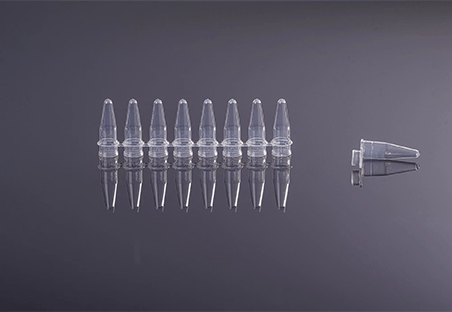
The Quality and Performance of PCR Consumables
1. Reliable Results You Can Trust
Imagine running a PCR experiment and discovering inconsistent results due to faulty tubes or plates. Cracked tubes can leak, uneven wells can cause temperature fluctuations, and inadequate seals can result in contamination. High-quality PCR consumables eliminate these concerns. They lay the groundwork for consistent and reproducible PCR results by ensuring even heat distribution, minimal evaporation, and a secure seal.
2. Sharpening the Focus
Uneven heating or contamination can disrupt your PCR, resulting in the amplification of unintended targets or the failure to detect your desired sequence. High-quality consumables come to the rescue, promoting optimal reaction conditions. They reduce unwanted background amplification while increasing the detection of your specific target DNA or RNA, allowing you to concentrate on the results that are important.
3. Minimizing Errors for Accurate Results
Leaking tubes and loose caps can make your PCR experiment a nightmare. Sample loss or contamination during pipetting can disrupt the entire workflow. High-quality consumables provide peace of mind. Their sturdy design and secure fit reduce these risks, ensuring precise handling of your valuable samples and a smoother path to success.
4. Cost-Effective Efficiency in the Long Run
While high-quality consumables may appear to be a slightly more expensive option at first, they are actually a wise investment. They save you money over time by reducing experiment failures due to faulty tubes or plates. Less wasted time, reagents, and samples result in a more cost-effective and efficient research process.
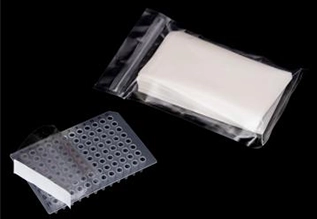
Laboratory Practices for Sustainable PCR Consumables
PCR experiments are essential for molecular biology research, but they can also produce a large amount of plastic waste. Here are some laboratory practices you can implement to promote sustainability when using PCR consumables:
1. Proper Optimization and Sample Management
By adjusting reaction volumes, you can use less reaction mix per experiment. This means you’ll need fewer PCR tubes and plates. Every PCR reaction that does not occur saves plastic for the tubes or plates that would otherwise be required. When you can strategically pool samples for analysis, you are essentially combining multiple PCR reactions into a single one. This further reduces the total number of tubes and plates required, reducing plastic waste. Optimizing reaction volumes also means using fewer expensive PCR reagents. This saves money while also reducing the environmental impact of reagent production and disposal.
2. Waste Reduction Strategies
A careful pipetting technique eliminates the need for extra tubes and plates due to errors. Efficient decontamination protocols enable the reuse of some consumables that would otherwise be discarded. PCR experiments require a large number of plastic consumables, which are frequently discarded after a single use due to traditional practices. Waste reduction strategies reduce the overall amount of plastic waste generated, resulting in a lower environmental footprint for your research. By reducing waste, you are basically conserving resources. Less plastic is required to manufacture new consumables, saving raw materials and energy. Sustainable practices emphasize waste reduction and resource conservation. Implementing waste reduction strategies demonstrates your lab’s commitment to a more environmentally friendly approach to scientific research.
3. Responsible Consumables Disposal
Some PCR consumables may be contaminated with hazardous materials or biological agents. Proper disposal ensures that these contaminants are treated appropriately, protecting both human health and the environment. Additionally, some recyclable plastics may require special handling in order for recycling facilities to accept them. Responsible disposal ensures that these materials are properly sorted and processed, allowing resources to be recovered whenever possible. PCR tubes and plates made of recyclable plastic should be disposed of in designated recycling bins. Check with your waste disposal company to make sure they accept these particular plastics. Autoclave or dispose of contaminated consumables in accordance with your institution’s hazardous waste disposal procedures.

Conclusion
The world of PCR consumables provides a diverse range of options to meet the specific requirements of your experiments. Choosing the right consumables, ranging from basic PCR tubes and plates to specialized real-time PCR options can significantly improve your workflow. However, the success of your PCR extends beyond the consumables used. High-quality PCR tubes and plates provide even heat distribution, minimal evaporation, and a secure seal, all of which contribute to consistent and repeatable results. Investing in high-quality consumables may appear to be a slightly higher upfront cost, but it results in significant long-term cost savings by reducing experiment failures and waste. Beyond optimizing performance, PCR users must consider their environmental impact. Scopelab is one of the reliable lab consumables suppliers in China. If you need more information about PCR consumables or other Scope instruments, welcome to consult with us.
